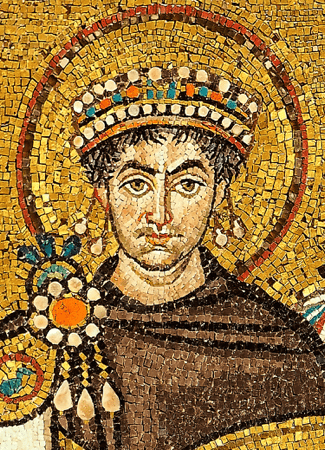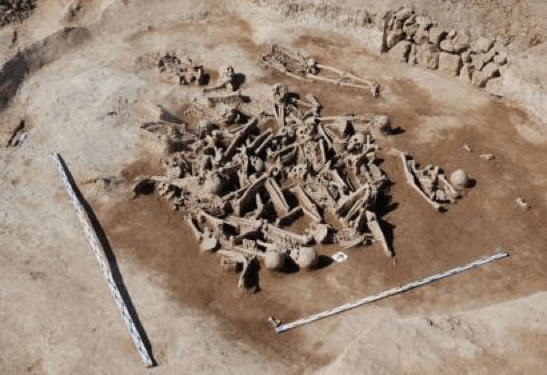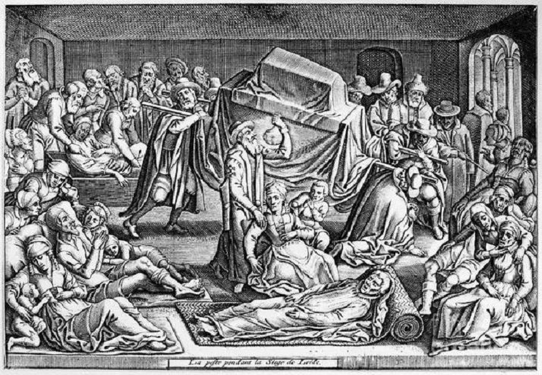Greek Diaspora History
The Plague of Justinian
The Plague of Justinian – The Plague that Crippled the Byzantine Empire
The Plague of Justinian, also sometimes referred to as the Justinian Plague, was a pandemic that largely impacted the Eastern Roman Empire, more commonly known as the Byzantine Empire during 541-542 AD. The plague continued to reappear and wreak havoc across the Mediterranean until 750 AD.
The Eastern Roman Empire (Byzantine Empire) during the time of the Plague of Justinian
It’s important to clarify that the inhabitants of the time considered themselves Roman citizens (Romoioi in Greek) and the Eastern Roman Empire the true continuation of the Roman Empire. The term “Byzantine” did not come into use until the 16th Century and general use in the 19th Century, when Western Historians wanted to differentiate the Eastern Roman Empire from the Holy Roman Empire. For the purpose of this article, we will be using the term most commonly associated with the empire today – the Byzantine Empire.
Although, at the time of the Plague of Justinian, the majority of the empire’s inhabitants were Greek speaking, the official language would not change from Latin to Greek for another 80 years (620 BC). At the time of the plague, the Byzantine Empire covered all of Greece; most of Illyria, Asia Minor, Israel and Egypt; and part of Northern Africa. About 10 years earlier, the Byzantine Empire had been rocked by the Nika riots, which resulted in the destruction of half of Constantinople and the death of tens of thousands of people.

Who was Justinian and why was is it called the Plague of Justinian or the Justinian Plague?
Justinian, also known as Justinian I or Justinian the Great, was the Byzantine Emperor between 527-565 AD. Often referred to as the last Latin emperor, Justinian sought about restoring the Ancient Roman Empire by reconquering many of the Western lands. By the end of his reign, he was largely successful, having reconquered Italy, Dalmatia, most of the Southern Iberian Peninsula, and most of Northern Africa.
The plague was named after Justinian largely as a result of it occurring during his reign as emperor, but also because he contracted the plague himself.

Justinian and Theodora
Justinian and Theodora were one of the first “power couples” in history. Theodora worked as an actress and prostitute before she met the future emperor, causing much controversy amongst the nobility of the time.
Theodora had a very strong influence on Justinian and the Byzantine Empire, so much so that during the Nika riotes of 532 AD (a decade before the Plague of Justinian), it is said that as Justinian considered fleeing Constantinople, Theodora delivered a motivational speech saying that “flight is not the right course, even if it should bring us to safety. It is impossible for a person, having been born into this world, not to die; but for one who has reigned it is intolerable to be a fugitive. May I never be deprived of this purple robe, and may I never see the day when those who meet me do not call me empress.” Her moving words convinced Justinian and the lord present to stay and defend the city against the rebels, and well the rest is history.

Procopius’ account of the Plague of Justinian
Most of what we know about the Plague of Justinian is a result of the work of Procopius in his book the Secret History. Procopius, also referred to as Procopius of Caesarea, was a Byzantine Greek scholar and historian from Palaestina Prima. He is regarded as a major historian of the 6th Century, accompanying Justinian’s general – Belisarius on his battles.
What were the symptoms of the Plague of Justinian?
In his book Secret History, Procopius describes the symptoms of the Plague of Justinian as including delusions; nightmares; fevers; and swellings in the groin area, armpits, and behind the ears. The suffering for some would last for days, while for others death came almost immediately after symptoms first appeared.
What was thought to be the disease that caused the Plague of Justinian?
Based on Procopius’ description of the Plague of Justinian, throughout history it has been considered that the disease responsible was the bubonic plague. Procopius even blamed the pandemic on the emperor himself, claiming that Justinian must either be the devil or must be being punished by God.
What type of plague was the Justinian Plague?
After extensive DNA testing of bones from the Justinian Plague, in 2013, researchers confirmed that the type of plague was in fact the bubonic plague (Yersinia pestis). It’s also very possible that the pneumonic plague and septicemic plague was also present during the Plague of Justinian.
The bubonic plague is the same type of plague that would devastate Europe some 800 years later and become known as the “black death”.
The Plague of Justinian origin?
Procopius identifies the plague as beginning in Egypt, in Pelusium on the Nile River’s northern and eastern shores. Although Egypt may have been where the plague entered the Byzantine Empire, the origins lie in much further lands. Many other theories revolve around the Plague of Justinian originating in Africa.
Studies of the bubonic plague (Yersinia pestis) suggest that this type of plague originated in Central Asia, predominantly in China and North East India. A skeleton found in the Tian Shan region (mostly in modern day Kyrgystan), dating to around 180 AD and identified as an “early Hun” was found to contain DNA from the bubonic plague (Yersinia pestis) closely related to the Plague of Justinian found in Byzantine bone samples. Therefore, the Plague of Justinian most likely originated in Central Asia.

How did the Plague of Justinian spread?
Advanced trade routes and war is the main culprit for the spread of the Plague of Justinian. Justinian’s ambitions to reconquer former Roman lands, as well as maintain the existing Byzantine Empire’s lands led to early battles with Ostrogoths, Vandals, Berbers, Franks, Slavs, Avars, and other barbarian tribes. This interaction with foreign peoples and rodents/fleas in foreign lands likely facilitated the spread of the plague.
The capital city of the Byzantine Empire – Constantinople was strategically located between the Black and Aegean seas. With the city at the centre of trade and commerce from China, the Middle East, North Africa, and Europe – it became a fertile ground for the plague.
The Plague of Justinian death toll
The Plague of Justinian is estimated to have killed between 30-50 million people. To put this into context, it would have been almost half the world’s population at that time!
Procopius reported that in Constantinople, the daily death toll would reach 10,000. Although modern historians believe that the real daily death toll was closer to 5,000; this still means that the city lost 20-40% of its inhabitants to the Plague of Justinian. Throughout the rest of the Byzantine Empire, about 25% of the population died.

How did the Justinian Plague affect the Byzantine Empire?
The Justinian Plague drastically weakened the Byzantine Empire, predominantly economically and in terms of man power. This made it more difficult to maintain the newly conquered lands under Justinian’s reign. After Justinian, in 568 BC, the Byzantines lost much of Northern Italy to the Lombards. The Byzantine Empire continued to gradually lose territory over the coming centuries, with few exceptions.

What stopped the plague?
The first bout of the Plague of Justinian ended in 542 BC, but continued to reappear until eventually ending in 750 AD. A similar type of bubonic plague would not resurface in Europe until the 14th Century.
As to what actually stopped the plague in 750 AD, well for at least another 800 years, History Professor – Thomas Mockaitis believes that “the best guess is that the majority of people in a pandemic somehow survive, and those who survive have immunity.”
How did the Justinian die?
Justinian himself contracted the plague but survived. The Byzantine emperor was about 83 years of age when he died in Constantinople on 14 November 565 AD. Likely dying of old age, the only other person in the room was an elderly aristocrat named Callinichus. Justin II, Justinian’s nephew, was named as successor to the throne of the Byzantine Empire.
Do you have an ancestral connection to the Byzantine Greeks? Trace your ancestry to find out. There are a number of DNA tests available but the most common and most trusted of them all is Ancestry.com
